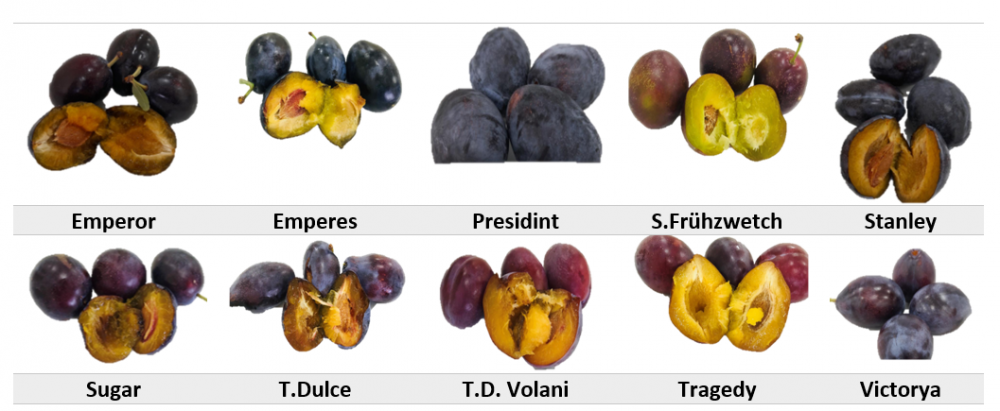JOURNAL 3043
Records of Agricultural and Food Chemistry
Year: 2024 Issue: 3 Special Issue: Abstracts 3rd. TCS, International Food Chemistry Congress February 29-March 03,2024 Antalya Türkiye
p.19 - 19
Viewed 1563 times.
GRAPHICAL ABSTRACT

ABSTRACT
Plum is the common name given to the trees and drupe fruits of many species belonging to the Prunus genus of the Rosaceae family. According to 2021 data of the United Nations Food and Agriculture Organization (FAO), 12 million tons of plums were produced annually worldwide. Turkey ranks 6th among plum producing countries worldwide with a share of 2.8% [1]. Turkey also exports 38.6 tons of plums annually and is ranked 7th among all plum exporting countries. Plums and products made from plums (plum concentrate and prune) have been reported to have many health benefits [2]. The combination of fibre, sorbitol and chlorogenic acids contained in plums has many beneficial effects on the digestive system, including the prevention of constipation, tooth decay and gingivitis, stomach ulcers and colon cancer [3]. In addition, it has been observed that the metabolites of quinic acid and certain phenolic compounds (chlorogenic acids and proanthocyanidins) contained in plums have a bacteriostatic effect in preventing urinary tract infections [4]. It has been suggested that phylloquinone (vitamin K1), found in relatively high amounts in plums, is important for cardiovascular health, bone metabolism and glucose/insulin regulation, and has a synergistic effect with boron and copper, which are abundant in prunes [5]. Plum species are grouped into 3 groups according to their homeland (gene centers): European-Asian, Far Eastern and North American species [6, 7]. The presented project determines the suitability of 34 plum varieties, adapted in the collection garden of the Erzincan TAGEM Horticulture Research Center, for the fruit juice industry and drying process through conducted analysis. Pomological and quality characteristics of the mentioned varieties, and general quality analysis, sugar and organic acid profiles, and carotenoid contents of fresh plums in puree form were determined. The results of these preliminary analyzes were evaluated using multivariate statistical analysis methods and 10 varieties were selected to determine their suitability for drying. After the selected varieties were dried by the traditional method, their concentrates were prepared with a process compatible with industrial production. The results obtained by determining the sugar, sugar alcohols and organic acid profiles, beta carotene, total phenolic substance contents and color properties of the prepared concentrates were re-evaluated with statistical analysis and the three most suitable varieties for the production of prune juice concentrate were determined. In the next stage, our company plans to establish plum gardens where these three varieties are planted. The presented study is the first project in Turkey to work with such a wide variety of plums in line with industrial targets.
KEYWORDS- Prune
- plum
- dried fruit juice
- juice production